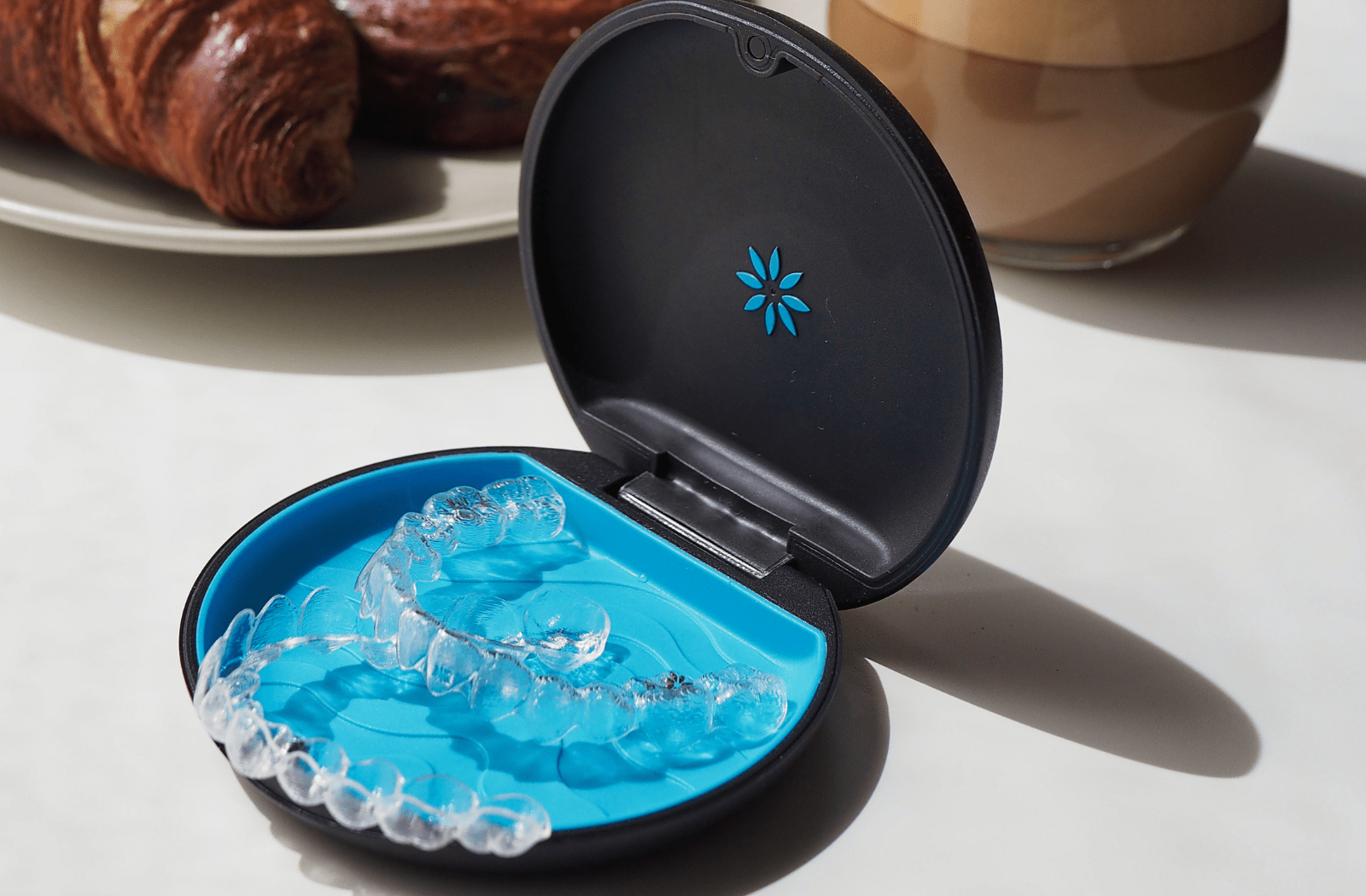Dental News From Bayview Hill Dental Centre
How Long Does It Take to Get a Dental Implant?
November 30, 2022 / Dental Implants

A dental implant is an artificial tooth root placed into your jaw to hold a crown, bridge, or other dental restoration in place. They are an ideal permanent solution to missing, broken or rotten teeth.
One of our most common questions is, "How long does it take to get a dental implant?"
Dental implants aren't a one-and-done procedure. Unlike dental exams and cleanings, dental implants require a commitment period of around 3 to 9 months.
This can seem like a considerable amount of time. However, if you've discussed it with your dentist and are a good candidate for dental implants, their benefits and longevity make them worth it.
We're here to explain what's involved in getting an implant, the timeline and recovery, and the advantages of dental implants.
What Is a Dental Implant?
Dental implants are permanently placed replacements for missing teeth. They are not teeth.
The implant, made from titanium, is placed in the jawbone where the missing tooth once was. It forms the foundation for a new replacement tooth root to which an artificial tooth is attached.
The result is comfortable teeth that look and function like natural teeth. The success of dental implants relies on several factors:
-
Good overall health with no health conditions that affect healing
-
Healthy gums
-
Full growth jawbone
-
Enough bone in your jaw to hold an implant (sometimes a bone graft is needed)
-
No smoking
-
Regular dental checkups
Dental Implant Procedure & Timeline
A dental implant procedure involves multiple steps over a few months because of the healing time between each step. Dental implants usually require a team of specialists experienced in oral surgery and restorative dentistry.
Evaluation
A comprehensive dental exam assesses your teeth, gums, and jawbone to ensure you are a candidate for dental implants. If there isn't enough jawbone, a bone graft may be considered.
Your medical history, including any conditions or medications you take, is discussed, and an individualized treatment plan is devised. The scope of a dental implant procedure depends on how many teeth need replacing, whether you need a bone graft and the condition of your remaining teeth.
Your dental specialist will inform you ahead of time what type of anesthesia—local, sedation, or general, you'll need for the procedure.
Implant Placement
If you have an endosteal implant, a cut is made in the gum to expose the jawbone. After a hole is drilled in the bone, the titanium post is inserted. The gum tissue is then stitched back.
If you have a subperiosteal implant, the titanium post is placed on or above the bone with no drilling required. You can experience discomfort and swelling in both implant placement procedures that can last several days.
Osseointegration
After the dental implant is placed, it can take anywhere from 2–6 months for the tissue to heal and for the jawbone to grow and bond with the implant. This is known as osseointegration and keeps the implant securely in place to support tooth replacement.
Abutment Placement
Once the implant has bonded with your jawbone, an abutment, a small connector post, is placed. The abutment connects the replacement tooth with the implant.
Placing the abutment involves reopening the gum tissue to reveal the implant. The gum tissue then heals around the abutment but not over. While the implant and the abutment are done over 2 appointments, in some cases, they can be done in one step.
Tooth or Teeth Placement
Gums need to heal before artificial teeth are attached. At this stage, impressions are made of your teeth for permanent or removable replacements.
Permanent teeth are cemented or screwed to the abutment, which looks and feels like natural teeth and requires the same care. It's typical to experience pain, discomfort, swelling, or minor bleeding after the procedure. However, if it continues or worsens in the days following surgery, contact your dentist immediately.

Benefits of Dental Implants
Like any dental procedure or surgery, there are risks and complications. Speak to your dentist about whether dental implants are right for you. Benefits of dental implants include:
-
Improves appearance, speech, comfort, and self-esteem.
-
Improves oral health by preserving the health of surrounding bone and gums.
-
Keeps adjacent teeth stable.
-
Restores the ability to chew and eat without pain.
-
Prevents jawbone shrinkage.
-
Implants are durable and can last for decades and possibly a lifetime with proper care and maintenance.
A Commitment That Can Last a Lifetime
The dental implant process can take several months, depending on your situation. But once completed, your new tooth or teeth will look and feel like natural teeth.
If you have missing teeth or dentures that don't stay in place, dental implants can help. Contact Bayview Hill Dental Centre to discuss our variety of dental implant options and see what will work best for you.
How Long Does a Teeth Cleaning Take?
November 12, 2022 / Dental Exams & Cleanings

Keeping Teeth Clean
Daily brushing and flossing are essential for maintaining healthy teeth and gums. Yet, even when diligently sticking to an oral hygiene routine, stubborn bacteria and dental tartar can resist. A professional teeth cleaning helps remove buildup in hard-to-reach spots.
Of course, removing harmful substances is only one dental service performed during routine teeth cleaning. Family dentistry services also focus on prevention and assessing your oral health to reduce the risk of future oral problems.
As a result, your time spent in the dentist's chair is more than a quick brush, floss, and rinse. So what can you expect when you schedule a routine tooth cleaning? How long does the process take?
Dental Exam & Cleaning
A routine teeth cleaning appointment includes various steps, including a dental exam. In addition to being more convenient for patients to do both during one appointment, it's also a simple way to practice prevention and hygiene.
How long a teeth cleaning lasts depends on what steps are necessary, what dental problems you may have, or any concerns you wish to discuss. The steps can also vary depending on whether the appointment is for an adult or a child.
The cleaning part of the process may take as little as 30–45 minutes, while the entire appointment may take up to 1 hour.
Routine Teeth Cleaning
You may have heard patients should visit their dentist every 6 months, but caring for your teeth should always follow personalized recommendations. Talk to your dentist about their recommendation to determine your risk level.
Teeth cleanings help patients protect their permanent teeth, gums, and oral health to reduce the risk of oral diseases and other issues.
A standard appointment for a teeth cleaning and exam commonly includes:
-
A Physical Exam: The initial visual inspection is performed by a dental hygienist and determines if there are any immediate concerns. The hygienist checks the condition of teeth, gums, bone, and tissue for inflammation, bleeding, positioning, and overall function.
-
Removing Plaque & Tartar: The first cleaning step is removing plaque and tartar. Dental hygienists use a scaler to remove the hardened buildup between teeth and around the gumline. The more buildup you have, the longer this step can take.
-
Teeth Polishing: An electric-powered device is used to firmly, but gently buff and polish your teeth to help remove bacteria and stains.
-
Fluoride Treatment: The last step of teeth cleaning is applying fluoride, a mineral used to strengthen enamel and protect teeth against cavities. Fluoridation may be offered as a hand-painted varnish or a foamy, gel-like substance contained in a mouthpiece. The hygienist may also ask for your preferred flavour.
After fluoride treatment, the dentist may perform an exam or assess any concerns noted by the hygienist. Any additional steps will depend on the patient's unique health needs.
Dental X-rays are not required for every visit but are a vital tool for monitoring changes to your oral health. When a patient shows signs of dental problems, a dentist may recommend capturing images more frequently. Generally, x-rays are taken yearly, with each image taking a minute to capture. Therefore, a set of images may add a few minutes to your appointment.

Adult vs Child Teeth Cleaning
A dental cleaning for an adult and a child can share many of the same steps, depending on the child's age. Permanent or adult teeth erupt or grow between ages 6–12 (although wisdom teeth may erupt later). As a result, dental cleaning and exams are tailored based on oral health and dental development.
Some key differences between adult and children’s teeth cleaning are:
Patient Education: Information about oral health should be accessible at any age. But pediatric dentists emphasize teaching children (and their parents) how to care for their oral health. For example, the dentist may take time to show the child how to brush and floss properly or provide information about nutrition or oral habits.
Dental Development: Your child’s dentist will assess how your child’s oral health is developing, including the position of erupting teeth. In some cases, x-rays may be necessary to check teeth that may be late, impacted, or otherwise causing dental issues.
Baby Teeth vs Permanent Teeth: Cleaning a baby's teeth and brushing adult teeth requires unique tools and techniques. Children can have tooth decay or oral health problems, but the risk factors may differ. How long it takes to clean children's teeth versus adult's teeth can also vary, mainly if there's a mix of primary, permanent, or missing teeth.
Fluoridation: Treating the teeth with fluoride or fluoridated toothpaste is standard for adults but is less common for babies and toddlers. Generally, baby teeth are cleaned with water only. The use of fluoride in children under 3 depends on a dentist's recommendation and their risk of developing tooth decay.
Flossing: Adults and children should floss daily. However, when a child's teeth erupt, the gaps between their teeth may negate the need for flossing. Generally, children should start flossing when their teeth touch. Your dentist can help you determine when children should begin flossing and how to floss correctly.
Talk to your dentist if you have concerns about your child's first visit or want to know how best to prepare them for their next visit. They may have tips for making the experience more comfortable for your child.
Make Time for Your Teeth at Bayview Hill Dental Centre
Making time for dental cleaning is essential for protecting your oral health. A professional clean removes dental tartar that daily brushing and flossing can’t. Your dentist can help you prevent and treat dental issues at any age.
Contact us at Bayview Hill Dental Centre for your next teeth cleaning!
Can You Eat with Invisalign On?
October 11, 2022 / INVISILIGN

We all have the desire to put on our best smile, and that can involve straightening your teeth to get your ideal look and support your dental health. The good news is that your dental professional can help you achieve this with Invisalign clear aligners.
Unlike traditional metal braces, you don’t need to worry about food getting stuck in your aligners because you remove them while you’re eating. It’s important to remove them any time you eat or when you drink anything other than water so that you don’t damage your aligners.
Let’s take a closer look at Invisalign, including how the process works and if you can eat with Invisalign on.
What Is Invisalign?
Getting your teeth straightened is possible at nearly all ages. Whether you’re a teenager or an adult, crooked teeth can interfere with fully cleaning your teeth or may make you feel self-conscious. Straightening your teeth is more accessible than ever with Invisalign.
Invisalign uses clear, removable aligners that are virtually undetectable to straighten your smile without the need for braces. Invisalign clear aligners can help:
-
Straighten misaligned teeth
-
Fill in gaps
-
Repair overbites
The Invisalign process may be a less intimidating option for anyone looking to correct their smile without needing more invasive dental procedures. Each aligner is custom-made per your doctor’s treatment plan.
How Does Invisalign Work?
The Invisalign process starts with a visit to your dentist, who can take a closer look at your teeth. Your dentist will be able to let you know very quickly whether or not Invisalign is the right choice for your smile goals. From there, your dentist will provide:
-
A personalized treatment plan
-
Follow-up appointments
-
Assistance with any issues you may be experiencing
The Invisalign treatment time usually depends on the complexity of your case. Invisalign can take as little as 6 months to complete, but you’ll often begin seeing results in a few weeks.
Every individual is different, and treatment time varies based on various factors, including:
-
Your age
-
Cooperation with the treatment plan
-
Regular check-ups with your dental professional

Eating with Invisalign
You’ll be wearing your Invisalign trays for extended hours throughout the day, so removing them for eating, brushing, and flossing is important.
You cannot eat with your Invisalign aligners in your mouth, but the good news is that once you’ve got the hang of removing them, they’re easy to take out so you can enjoy your lunch hour.
Maintaining Your Aligners
Your aligners aren’t designed to withstand chewing or hold up to the discolouration caused by food and drinks other than water. Tell your dentist about any damage to the Invisalign aligners, as that damage could affect the effectiveness of your treatment.
Maintenance of your Invisalign trays is also crucial. Properly rinsing your Invisalign aligners after removing them is essential.
Begin Your Invisalign Journey
If you’re looking to straighten your teeth, Invisalign is a subtle and effective method for many patients. By removing your aligner trays when you eat or drink, you’re helping ensure an effective treatment process.
Contact Bayview Hill Dental Centre today to learn if Invisalign is right for your smile.


